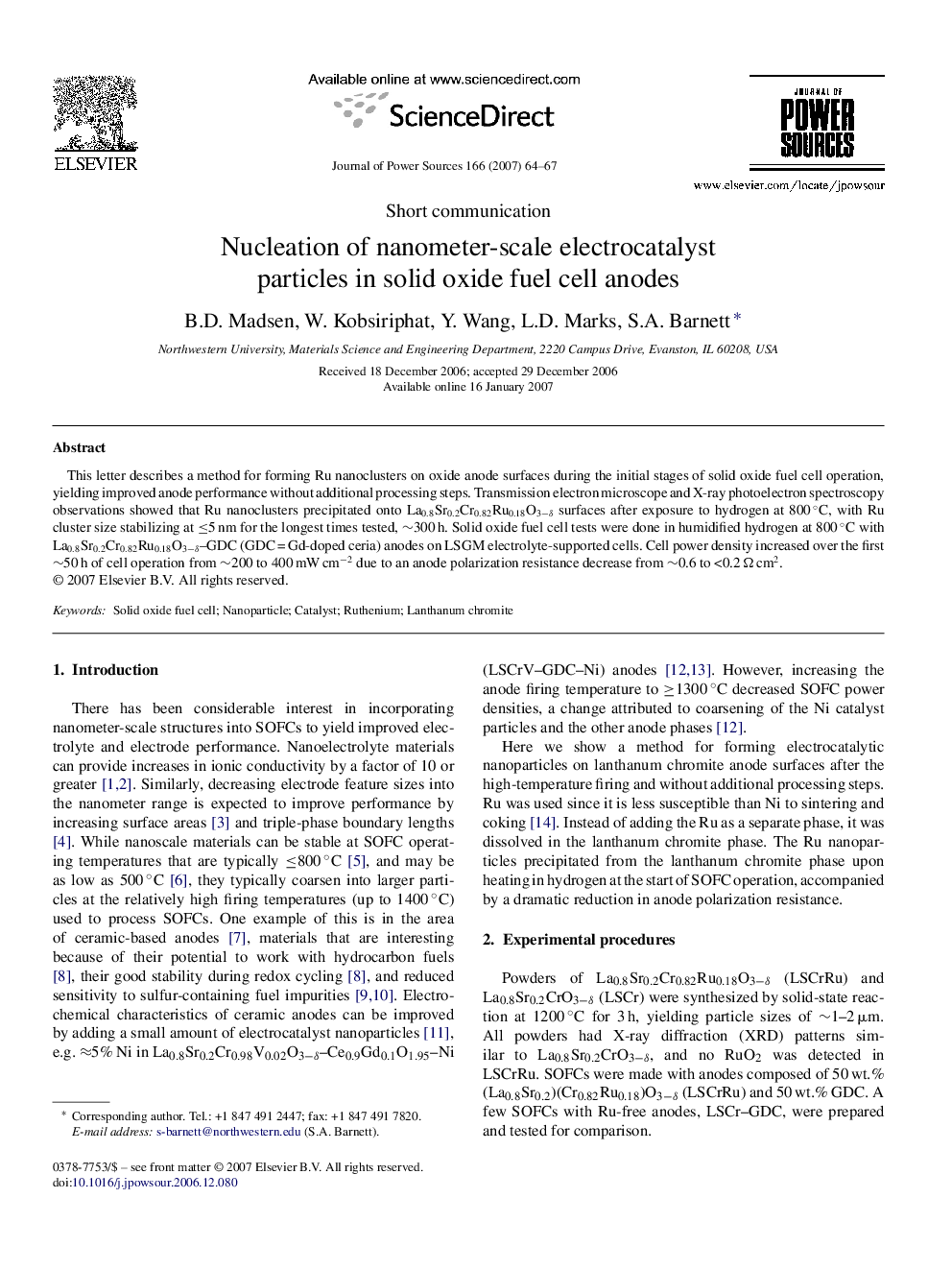| Article ID | Journal | Published Year | Pages | File Type |
|---|---|---|---|---|
| 1290915 | Journal of Power Sources | 2007 | 4 Pages |
This letter describes a method for forming Ru nanoclusters on oxide anode surfaces during the initial stages of solid oxide fuel cell operation, yielding improved anode performance without additional processing steps. Transmission electron microscope and X-ray photoelectron spectroscopy observations showed that Ru nanoclusters precipitated onto La0.8Sr0.2Cr0.82Ru0.18O3−δ surfaces after exposure to hydrogen at 800 °C, with Ru cluster size stabilizing at ≤5 nm for the longest times tested, ∼300 h. Solid oxide fuel cell tests were done in humidified hydrogen at 800 °C with La0.8Sr0.2Cr0.82Ru0.18O3−δ–GDC (GDC = Gd-doped ceria) anodes on LSGM electrolyte-supported cells. Cell power density increased over the first ∼50 h of cell operation from ∼200 to 400 mW cm−2 due to an anode polarization resistance decrease from ∼0.6 to <0.2 Ω cm2.
